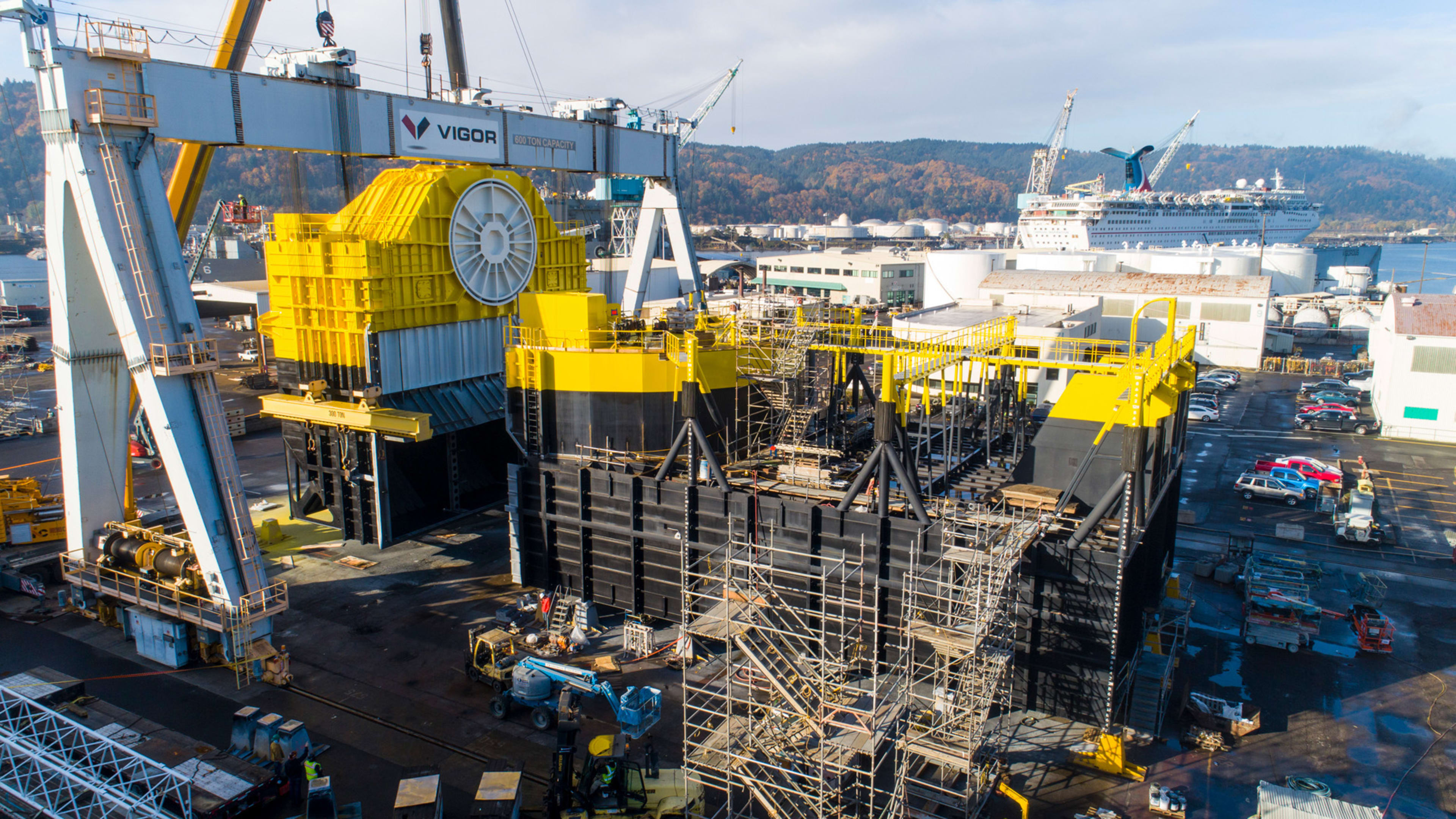In a shipyard in Portland, Oregon, a massive new energy generating device is nearly complete. In mid-May, it will begin a three-week journey to Hawaii for the first large-scale test of the tech connected to the grid. Months later, two other new technologies will also head to Hawaii to begin their own tests. It’s one step toward wider adoption of a form of renewable energy that doesn’t yet exist commercially: waves.
Wave power, which captures electricity generated by the movement of ocean waves, is a resource that could supply 10% of the world’s electricity needs, says John McCarthy, CEO of Ocean Energy, the Ireland-based company testing the first device, the 826-ton, 125-foot-long Ocean Buoy. That resource “is as yet untapped,” he says. “There’s a lot of commercial potential, and obviously, greenhouse gas benefits and climate action benefits from using that source of energy.”

Even as wind and solar power continue to quickly grow and drop in cost–to the point where they’re now cheaper to run than most old coal plants–there could still be a role for wave power. “At many locations around the world, it’s more of a complimentary resource rather than a competitive resource, and that has to do with the times of day and season that waves tend to peak relative to solar,” says Balakrishnan Nair, president and chief technical officer of Oscilla Power, another wave energy company that plans to begin testing at the same site in Hawaii, the U.S. Navy Energy Test Site off the coast of O’ahu. In the Pacific Northwest, for example, waves get more intense in the winter when sunlight wanes. Waves are also a steadier, more predictable source of energy than wind or solar power, which need batteries or another form of storage (or backup from fossil power plants), for times when the sun or wind is unavailable.
[Photo: courtesy Ocean Energy]“For someone who’s trying to operate the electrical [grid], knowing when that resource is going to be available to them is incredibly valuable,” says Bryson Robertson, an engineering professor at Oregon State University and co-director of the Pacific Marine Energy Center, a consortium of researchers at three universities that is working to objectively evaluate the potential of ocean energy and help push the industry forward. The technology could also be particularly useful for remote islands that currently rely on expensive imported energy sources like diesel fuel–and that either don’t have the space for large-scale solar or wind farms or want to supplement other renewable energy.
There are a variety of form factors for wave power. Nair describes Oscilla Power’s system, for example, as “the opposite of a boat.” Instead of staying as stable as possible in the water, it moves as much as possible, capturing energy from different types of waves; in stronger waves, it might move front to back or up and down, and for weaker waves, it might move side to side. “The net effect of all of this is it translates to a very high energy capture, which addresses one of the primary weaknesses of wave energy devices,” Nair says. Traditionally, he says, most designs have focused on trying to capture power from one type of wave, meaning that they’re inefficient the rest of the time. Columbia Power, another company that will soon begin tests of one of its devices in Hawaii, has a “wave farm” system of multiple devices that rotate in each passing wave.

Compared to wind and solar power, marine power is at a nascent stage. It’s been slower to take off in part simply because it’s difficult to work in the ocean. “Generally, doing anything in the ocean takes longer, and it’s more expensive,” says Robertson. Engineers have to design systems that can survive the corrosive effects of seawater and withstand the intensity of waves; just running tests and iterating requires boats and more cost than working on land. “The other thing is the marine energy industry has seen significantly less investment than the solar and [wind] industry.” While there are already ongoing wave and tidal energy pilots in Scotland and France, the technology hasn’t yet taken off commercially.
But that might finally be closer to happening. After the yearlong tests in Hawaii, for example, Oscilla says that it will be ready to begin selling its smaller system. It also has a buyer and site lined up for its first utility-scale system, a version of the technology that could eventually compete with other renewable energy on cost. (The first smaller systems will target remote communities that are paying very high electric rates now, so they can also save money.)
“It’s an opportunity that’s been waiting to blossom for a very long time,” says Nair. “If you look at the oldest wave [energy] patents, they are back in the 1790s. So people have been trying to do this for a very long time.” It’s only in the last few years, he says, that technology has converged to make it possible to do more testing on a computer and to speed up the pace of innovation. “We as an industry are in a really good spot now to actually make this happen.”
Recognize your brand’s excellence by applying to this year’s Brands That Matter Awards before the early-rate deadline, May 3.
